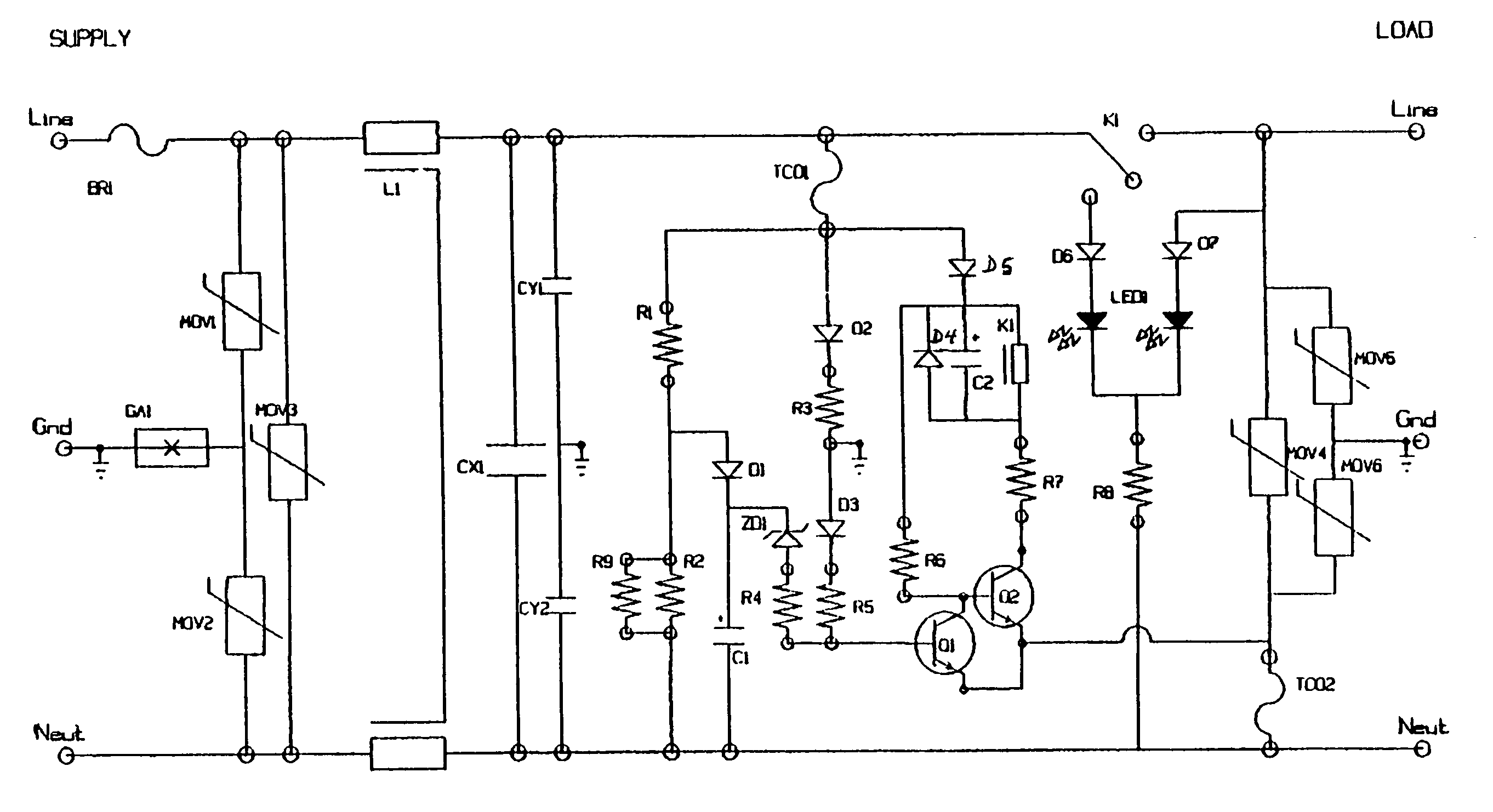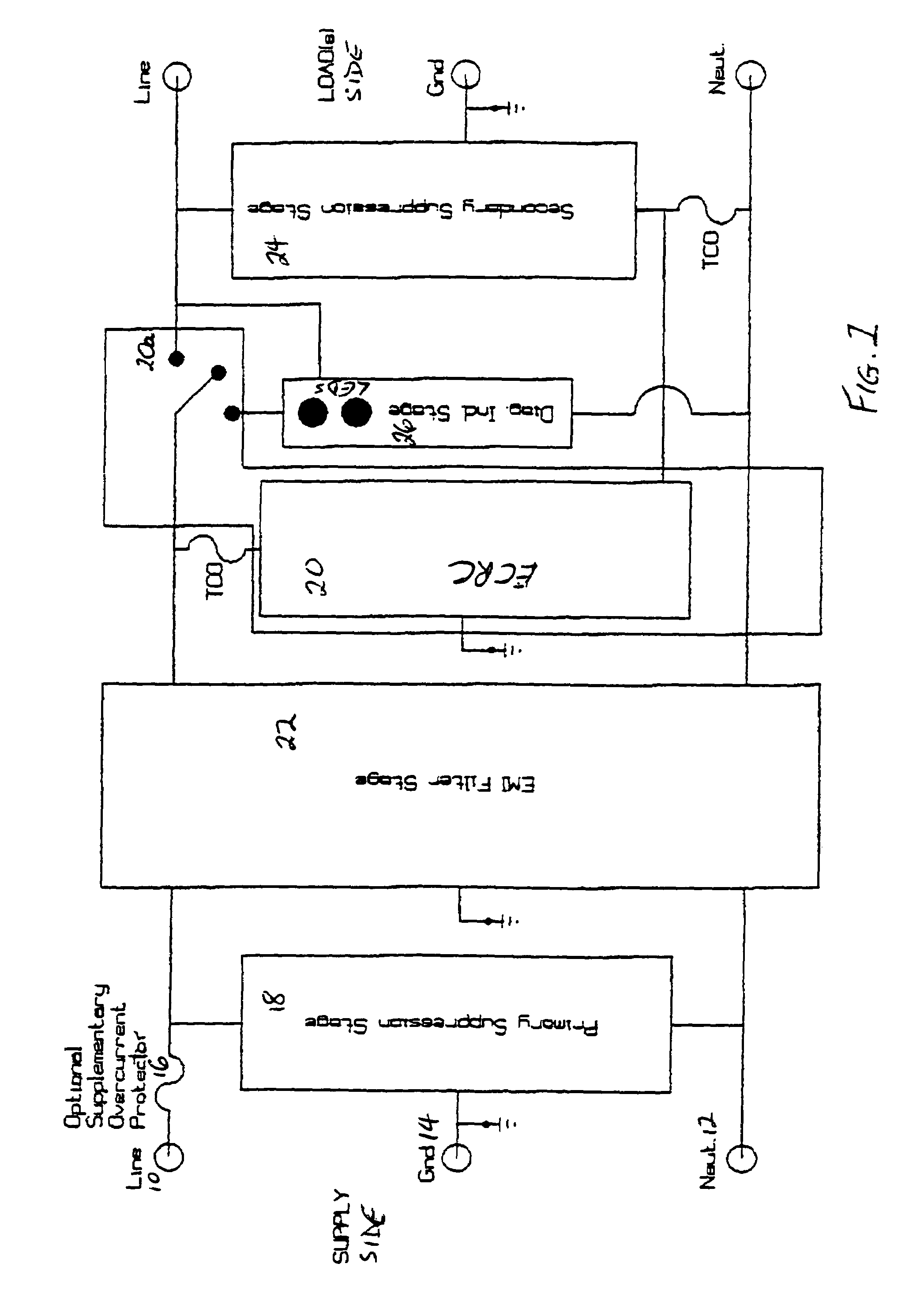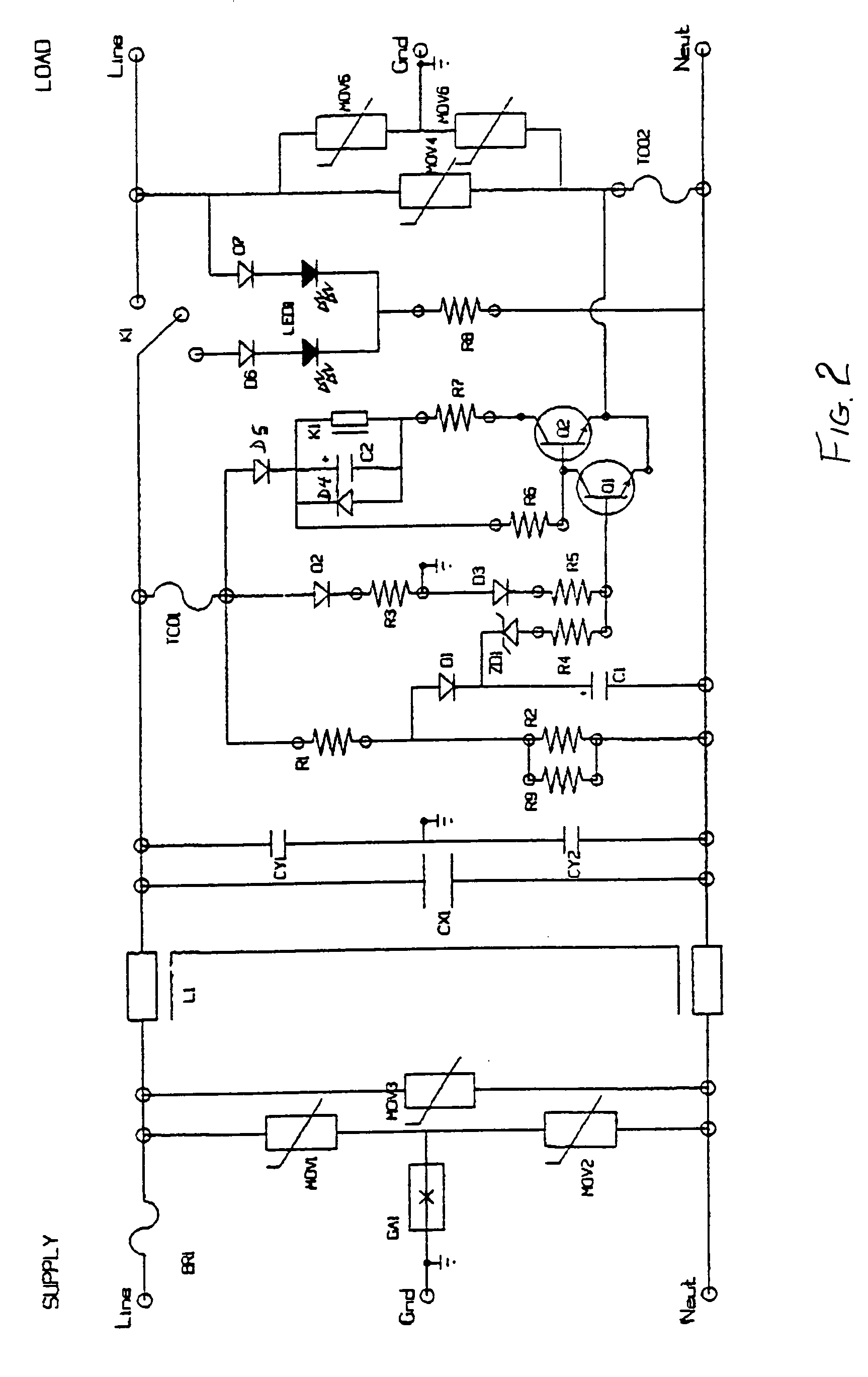Power protection device
- Summary
- Abstract
- Description
- Claims
- Application Information
AI Technical Summary
Benefits of technology
Problems solved by technology
Method used
Image
Examples
Embodiment Construction
[0039]FIG. 1 is a block diagram of the preferred embodiment of the invention. The illustration includes supply side line 10, neutral 12, and ground 14 terminals that connect to the line, neutral, and ground contacts, respectively, of the supply system (not shown).
[0040]An optional supplementary over-current protector 16 (a thermal circuit breaker or fuse), is connected in series with line conductor 10, and is used to protect the device and connected equipment (not shown) from over-current conditions such as those caused by a connected equipment fault.
[0041]A primary suppression stage, which utilizes both MOV and GDT components as would be known to one skilled in the art, is connected across the line, neutral, and ground conductor pairs on the load side of supplementary overcurrent protector 16, and is used as primary transient protection for the ECR circuit 20 and connected equipment. Primary suppression stage 18, as well as EMI filter stage 22 and ECR circuit 20, is designed to wit...
PUM
 Login to View More
Login to View More Abstract
Description
Claims
Application Information
 Login to View More
Login to View More - R&D
- Intellectual Property
- Life Sciences
- Materials
- Tech Scout
- Unparalleled Data Quality
- Higher Quality Content
- 60% Fewer Hallucinations
Browse by: Latest US Patents, China's latest patents, Technical Efficacy Thesaurus, Application Domain, Technology Topic, Popular Technical Reports.
© 2025 PatSnap. All rights reserved.Legal|Privacy policy|Modern Slavery Act Transparency Statement|Sitemap|About US| Contact US: help@patsnap.com



